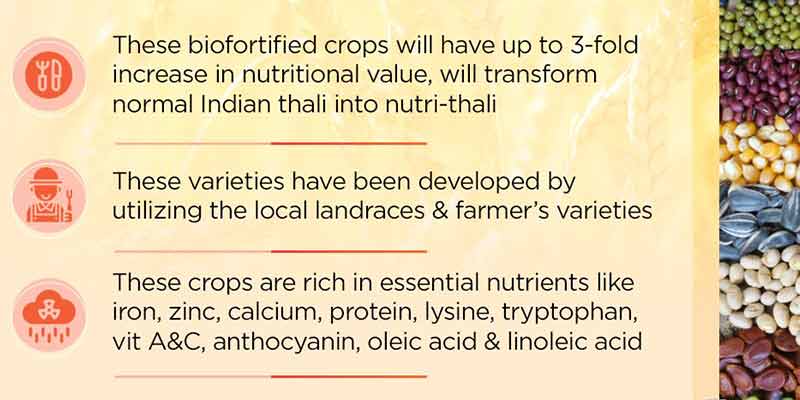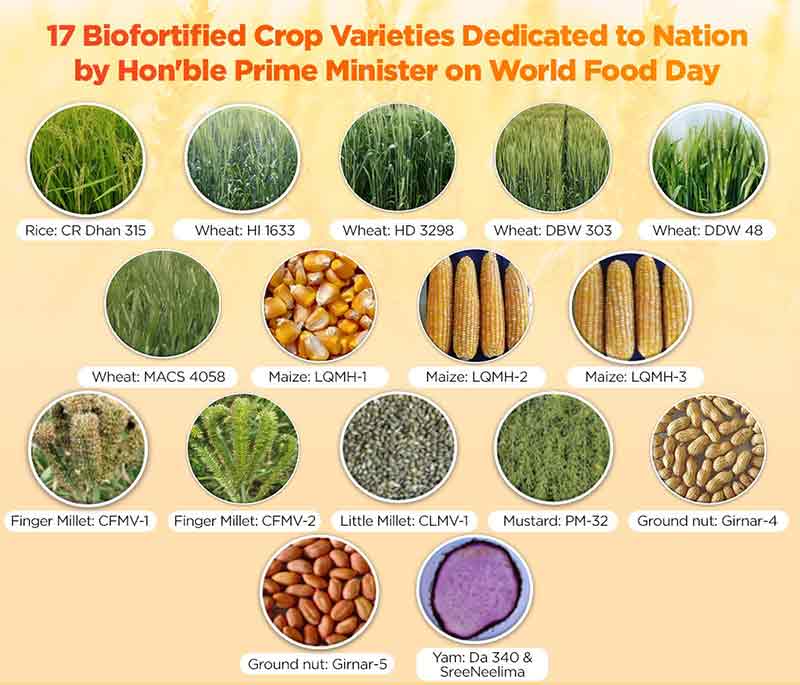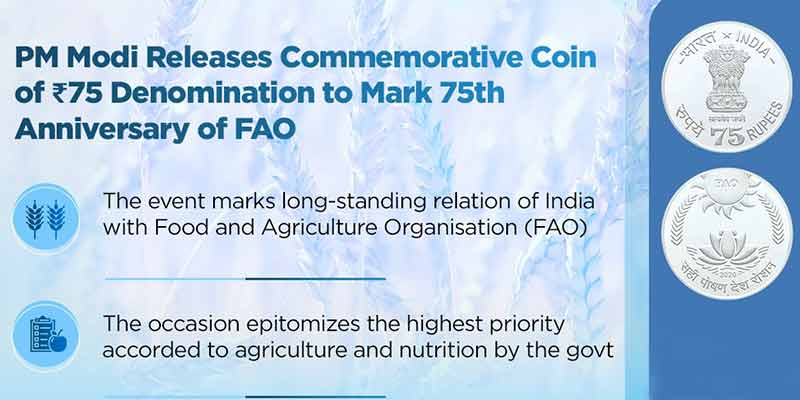- India
- Oct 16
PM dedicates 17 biofortified varieties of crops to the nation
Prime Minister Narendra Modi issued a commemorative coin of Rs 75 and dedicated 17 biofortified varieties of eight crops to the nation on the occasion of 75th anniversary of the Food and Agriculture Organization (FAO) on October 16.
What are the biofortified varieties?
The biofortified varieties are about three times more nutritious than the traditional varieties.
• The rice variety CR DHAN 315 has excess zinc.
• The wheat variety HD 3298 is enriched with protein and iron.
• DBW 303 and DDW 48 are rich in protein and iron.
• The maize hybrid varieties 1, 2 and 3 are enriched with lysine and tryptophan.
• The finger varieties of Millet CFMV 1 and 2 are rich in calcium, iron and zinc.
• The CCLMV1 variety of small millet is rich in iron and zinc.
• The Pusa Mustard 32 is enriched with low Erucic Acid.
• Girnar 4 and 5 varieties of peanuts are rich in increased Oleic Acid.
• Yam’s Shri Neelima and DA 340 varieties are enriched with anthocyanin.
These varieties, along with other food ingredients, will transform the normal Indian thali into nutri-thali. These varieties have been developed by utilising the local landraces and farmer’s varieties.
What is biofortification?
Fortification is the practice of deliberately increasing the content of an essential micronutrient — vitamins and minerals (including trace elements) — in a food, so as to improve the nutritional quality of the food supply and provide a public health benefit with minimal risk to health.
Biofortification is the process by which the nutritional quality of food crops is improved through agronomic practices, conventional plant breeding, or modern biotechnology.
Biofortification differs from conventional fortification. Biofortification aims to increase nutrient levels in crops during plant growth rather than through manual means during processing of the crops.
Biofortification may therefore present a way to reach populations where supplementation and conventional fortification activities may be difficult to implement or limited.
Examples of biofortification projects include:
*Iron-biofortification of rice, beans, sweet potato, cassava and legumes.
*Zinc-biofortification of wheat, rice, beans, sweet potato and maize.
*Provitamin A carotenoid-biofortification of sweet potato, maize and cassava.
*Amino acid and protein-biofortification of sorghum and cassava.
Significance of biofortification
• Biofortification, the process of breeding nutrients into food crops, provides a comparatively cost-effective, sustainable, and long-term means of delivering more micronutrients.
• This approach not only will lower the number of severely malnourished people who require treatment by complementary interventions, but also will help them maintain improved nutritional status.
• Climate change is reducing the nutritional quality of food and biofortification has the potential to address this challenge.
• The Food and Agricultural Organisation (FAO) is working with the World Health Organisation on joint guidelines on biofortification.
• Despite the evidence of its effectiveness, biofortification has not yet been fully mainstreamed.
Manorama Yearbook app is now available on Google Play Store and iOS App Store



